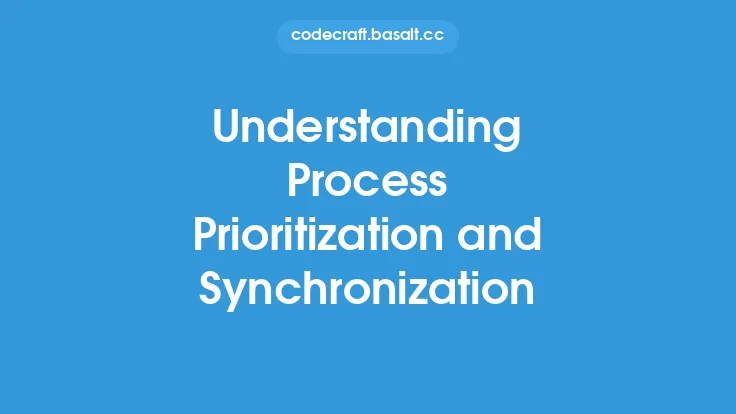The efficiency of input/output (I/O) operations is crucial for the overall performance of a computer system. I/O operations involve the transfer of data between devices, such as hard drives, solid-state drives, and network interfaces, and the system's memory. Optimizing I/O performance is essential to ensure that the system can handle a large number of requests efficiently, reducing latency and increasing throughput. One effective way to optimize I/O performance is through scheduling and prioritization.
Introduction to I/O Scheduling
I/O scheduling refers to the process of managing the order in which I/O requests are serviced by the system. The goal of I/O scheduling is to optimize the performance of the system by minimizing the time it takes to complete I/O requests. There are several I/O scheduling algorithms, each with its strengths and weaknesses. The most common algorithms include First-Come-First-Served (FCFS), Shortest Seek Time First (SSTF), Scan, and Circular Scan (C-Scan). FCFS is a simple algorithm that services requests in the order they are received, while SSTF services the request that requires the shortest seek time. The Scan and C-Scan algorithms are more complex and involve servicing requests in a specific order to minimize seek time.
Prioritization of I/O Requests
Prioritization of I/O requests is another technique used to optimize I/O performance. Prioritization involves assigning a priority to each I/O request based on its urgency or importance. The system then services the requests in order of their priority. Prioritization can be based on various factors, such as the type of request, the process making the request, or the deadline for completing the request. For example, a system may prioritize requests from a database server over requests from a file server, as database requests are typically more time-sensitive.
Scheduling Algorithms
There are several scheduling algorithms that can be used to optimize I/O performance. The choice of algorithm depends on the specific requirements of the system and the characteristics of the workload. Some common scheduling algorithms include:
- Earliest Deadline First (EDF) Scheduling: This algorithm services requests in the order of their deadline. Requests with earlier deadlines are serviced first.
- Rate Monotonic Scheduling (RMS): This algorithm services requests based on their priority, which is determined by their period and deadline.
- Proportional Share Scheduling: This algorithm services requests based on their priority, which is determined by their share of the system's resources.
I/O Scheduling in Modern Operating Systems
Modern operating systems, such as Linux and Windows, use complex I/O scheduling algorithms to optimize performance. These algorithms take into account various factors, such as the type of request, the priority of the request, and the current system workload. For example, the Linux kernel uses a scheduling algorithm called the Completely Fair Scheduler (CFS), which services requests based on their priority and the amount of time they have been waiting.
Best Practices for Optimizing I/O Performance
To optimize I/O performance, system administrators and developers can follow several best practices. These include:
- Using high-performance storage devices: Using high-performance storage devices, such as solid-state drives, can significantly improve I/O performance.
- Optimizing system configuration: Optimizing system configuration, such as setting the optimal block size and queue depth, can improve I/O performance.
- Using I/O scheduling algorithms: Using I/O scheduling algorithms, such as the ones mentioned earlier, can help optimize I/O performance.
- Monitoring system performance: Monitoring system performance, such as I/O throughput and latency, can help identify bottlenecks and optimize I/O performance.
Conclusion
Optimizing I/O performance is crucial for ensuring the overall performance of a computer system. I/O scheduling and prioritization are effective techniques for optimizing I/O performance. By understanding the different I/O scheduling algorithms and prioritization techniques, system administrators and developers can optimize I/O performance and improve the overall efficiency of the system. Additionally, following best practices, such as using high-performance storage devices and optimizing system configuration, can further improve I/O performance. By taking a holistic approach to I/O performance optimization, system administrators and developers can ensure that their systems can handle a large number of requests efficiently, reducing latency and increasing throughput.





